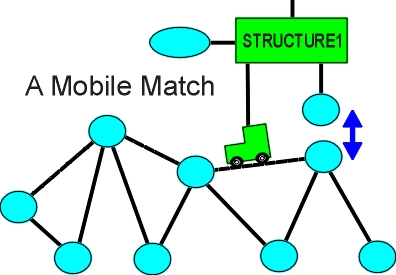
Most forms of STRUCTURE1 only need to directly link to
symbols on a one for one basis, but sometimes you need to look back to the beginning, or
forward to the end, over whatever symbols are there, to look for a particular one.
CHECKLEFT runs left and CHECKRIGHT runs right, looking for an acceptable symbol - if the
operator finds one, the particular leg of the STRUCTURE1 operator to which it is attached
has matched. It has sets of symbols that indicate: success, failure, suspension or
stopping bound.
Format:
CHECKLEFT(AcceptSet, RejectSet, StopSet, SuspendSet)
CHECKRIGHT(AcceptSet, RejectSet, StopSet, SuspendSet)
As an example, "as" may be a subordinate conjunction or a preposition, but if there is no following verb, then it can only be a preposition, and the property of the symbol should be changed using
STRUCTURE1(ChangingSymbol,{ADDPROPERTY(SubordinatePrepositional, Prepositional), CHECKRIGHT({},{VerbPhrase}, {ClauseTerminator}, {StartNounPhrase, StartRelativePronounPhrase})})
The operator handles phasing - making sure the environment is ready for its operation, and restarting when that is likely to be the case.
When a procedure is used, attachment may not occur, the procedure in AcceptSet having carried out its task already. An example is checking for an interim noun phrase following a prepositional, such as
.......................the amount was owed by the tenant or a sub-tenant
The PrepositionalPhrase Conjunction InterimNounPhrase would have been detected, but also a check using CHECKLEFT would have been made that symbols further to the left were suitable for checking if the grouping with the prepositional fails. The procedure checks that "tenant or sub-tenant" is a feasible grouping and groups them, changing the parse chain structure in the process. The procedure returns a false, indicating the matching failed, so the STRUCTURE1 does not appear to attach (and then need detaching).